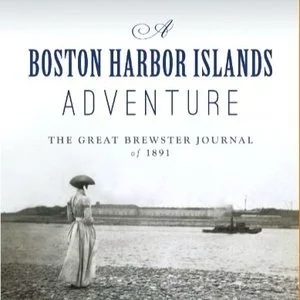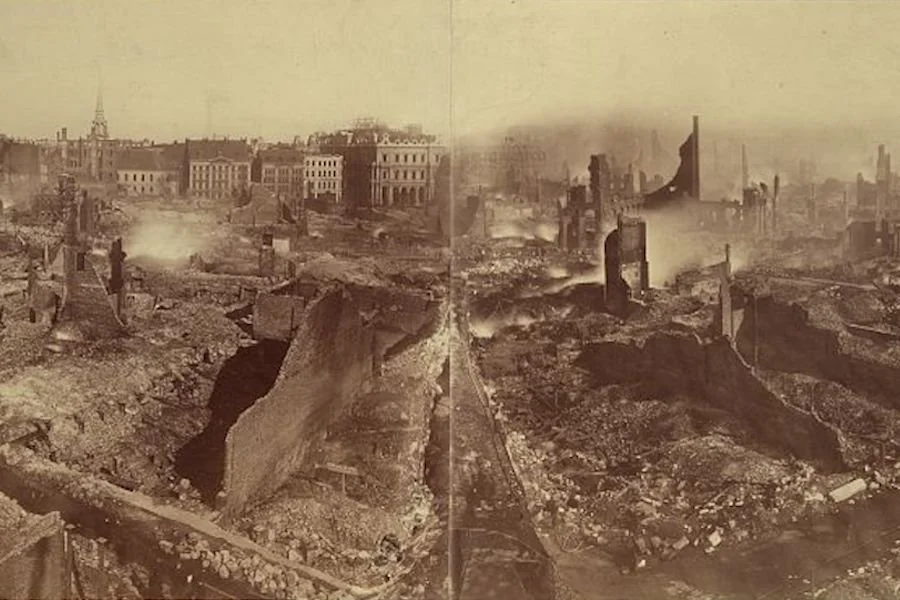It was a snowy January night in 1832 when a meeting was held to found the New England Anti-Slavery Society. Two young abolitionists associated with NEASS—the white William Lloyd Garrison and the Black William Cooper Nell—bucked the tide of segregation in Boston. They went on toiling to end slavery and racial inequality while forging a close, working friendship that lasted through their deaths, half a century later. When they were both interred in Forest Hills Cemetery.
Read MoreA talk by Stephanie Schorow and volunteers from the Friends of the Boston Harbor Islands on A Boston Harbor Island Adventure: the Great Brewster Journal of 1891. In July 1891, four intrepid women from Lowell, Massachusetts, set off for Great Brewster Island in Boston Harbor for an adventure they would remember all their lives. Calling themselves “the Merrie Trippers,” the women created a journal of their 17-day sojourn with entries, illustrations and photographs. But they did not include their names. In an illustrated lecture Schorow explores the journal’s discovery, its intriguing entries and photographs, and how volunteer researchers managed to identify the writers. Some of the volunteers read excerpts.
Read MoreA talk by Emily Bowe of the Leventhal Map Center about the the Boston Public Library’s remarkable collection of approximately 500 bird’s-eye view maps from the late-nineteenth and early-twentieth centuries. How were these maps produced? How accurate are they? What sorts of historical information can we learn from them? Join Emily for a deep dive on bird’s-eye view maps of Boston, mapmaking techniques and more.
Read MoreA talk by Stephanie Schorow about her book 'The Great Boston Fire’. For two days in November 1872, a massive fire swept through Boston, leaving the downtown in ruins and the population traumatized. Stephanie recounts the fire’s history from the foolish decisions that precipitated it to the heroics of firefighters who fought it.
Read MoreThere are four sculptures by Daniel Chester French at Forest Hills Cemetery but one is actually largely the work of his only woman assistant, his protégé Evelyn Beatrice Longman (1874 -1954). Longman was French’s only female assistant but went on to be a well-known sculpture in her own right. She successfully practiced her art creating both public and private commissions for 50 years.
Read MoreAt the corner of Carolina Avenue and Lee Street in Jamaica Plain sits a charming cottage on an unusually large parcel of land for the surrounding neighborhood. This house, at 101 Carolina Avenue, was the first to be built on the street. Though significant for its age, also important is the role it played in the history of Jamaica Plain. In 1913, the house transformed from a single-family home into the home of the Jamaica Plain Neighborhood House Association. This article explores the history of the people who lived within its walls and, later, its life as a settlement house.
Read MoreA Boston Globe article from 1888: Jamaica Plain has some rich men, in fact very rich, but they are nearly all comparatively new residents, who have never been identified with its progress as a town, but whom, after the annexation, where induced to settle there by unrivalled opportunities which are offered by its hills and ponds for romantic and picturesque residences, which these men who have acquired a generous share of the world’s goods always desire.
Read MoreThe application of the Jamaica Club, the leading social club of Jamaica Plain, for a club license to sell liquor has caused excitement in that section among the temperance organizations and churches. Boston Globe article from 1897.
Read MoreA transcription of a booklet entitled ‘Health’ published by the Society to Encourage Studies at home in 1878. The authors were the Society’s Secretary Anna Eliot Ticknor who worked with Ellen Swallow Richards to produce this tract. The purpose - in their words: These pages are addressed to the Students of the Society to Encourage Studies at Home, to the women living in different parts of the United States, who have joined it for the purposes of home education. Grieved by the amount of ill-health revealed in the correspondence, the Committee resolved to make an appeal in behalf of the laws of health, not only on the usual grounds, but for the sake of the very studies which the Society aims to promote.
Read MoreSt. Thomas Aquinas – the Mother Church of Jamaica Plain and West Roxbury – turns 150 years old on August 17, 2019. [i] St. Thomas was established in 1869 and dedicated on August 17, 1873, the year before Jamaica Plain was annexed to Boston. As the seat of the Catholic faith in Jamaica Plain, out of it grew the churches of Our Lady of Lourdes and St. Andrew the Apostle.
Read MoreMemorial Day was born in 1866, out of the Civil War, and has grown to become a holiday to commemorate the dead of all wars.
Read MoreOur Civil War street names focus on heroes of the war: the naval officer Porter, the general Sheridan, post-war president Andrew Johnson, Massachusetts war governor John Albion Andrew (also seen above an arch on the Monument), and perhaps, in a magnificent gesture, Southern commander-in-chief Robert E. Lee.
Read More







![Jamaica Plain's Rich Men [1888]](https://images.squarespace-cdn.com/content/v1/599df1b6f7e0ab22dd624cb9/1592768890074-T6X929EBZRBDDNZL5B0Y/sturtevant+works.jpeg)




